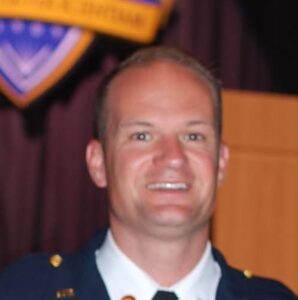Emergency Medical Services (EMS) personnel are on the front lines of the overdose crisis. EMS have been using naloxone for decades when treating unresponsive patients. EMS providers offering naloxone to people at risk of overdose and connecting them to prevention resources is a critical underutilized approach. This webinar will address how engagement with EMS personnel through leave behind programs can bolster existing overdose prevention activities, address stigma, and improve naloxone access for vulnerable populations.

Erin Russell, Center for Harm Reduction Services at Maryland Department of Health
In her role as Chief at the Center for Harm Reduction Services at the Maryland Department of Health, Erin provides leadership for the Prevention Office within the Behavioral Health Administration. She provides oversight, funding, and technical assistance for locally operating public health programs focused on the reduction of harm from drug and alcohol use. Erin also serves as a national expert, providing consultation services to states to implement harm reduction related programs; facilitate training for large groups on substance use prevention

Anthony Pantaleo, BAS, Paramedic I/C, Bureau of EMS, Trauma, and Preparedness, Michigan Department of Health and Human Services
Anthony is the EMS Opioid Outreach Coordinator for the Bureau of EMS, Trauma, and Preparedness with the Michigan Department of Health and Human Services. He received his Bachelor of Applied Sciences in Public Safety from Siena Heights University. Anthony has worked in public safety for over 25 years as a Paramedic, EMS Instructor, Firefighter, and EMS administrator. Anthony also helps those in public safety with Critical Incident Stress Management.

Stephanie Busch, BS, AEMT, CPST, Injury Prevention Manager, AEMT, Vermont Department of Health
Stephanie Busch, BS, AEMT is the Injury Prevention Manager at the Vermont Department Health in Burlington Vermont. She has been involved in EMS and public health since 2013 at the national, state and local level. In her current role she actively collaborates with community partners, governmental partners, and first responders around injury prevention initiatives including opioid overdose prevention and suicide prevention. Ms. Busch has a long history of working within interdisciplinary committees and teams by bringing together non-traditional partners, and breaking down silos to build partnerships in addressing 'wicked' public health problems. In her spare time she is a volunteer AEMT with Colchester Rescue in Vermont.

Becca Scharf, Data and Performance Analyst' Howard County Department of Fire and Rescue Services
Becca Scharf is a researcher and EMS data analyst at the Howard County Department of Fire and Rescue Services in Maryland. Her work centers around emergency medical services policy, system performance, and program evaluation. Her previous research has focused on Mobile Integrated Health Programs, EMS opioid overdose response programs, harm reduction policy, and other EMS-related community initiatives.
Becca is a PhD student at the University of Maryland, Baltimore County School of Public Policy with a concentration in emergency health services policy. She received a master’s degree in emergency health services epidemiology and preventive medicine research in 2017. Becca has previously worked as a graduate assistant analyst in the Office of the Medical Director at Howard County Fire and Rescue and served as a research assistant in the UMBC Department of Emergency Health Services. She is passionate about finding new ways to use data to improve EMS performance measurement and policy.

David Sabat, Battalion Chief of EMS Operations, Howard County Department of Fire and Rescue Services
David Sabat has been a career member of Howard County Department of Fire and Rescue Services for 19 years, serving as a company lieutenant, instructor at the training academy, company captain, and now battalion chief of EMS operations. David holds a bachelor's degree in emergency health services from the University of Maryland, Baltimore County and a master's degree in homeland defense and security from the Naval Postgraduate School. David completed his paramedic training at Baltimore County Community College – Essex in 2001. Although born and raised in central New Jersey, David has lived in Maryland since 1998. David served in the Maryland Army National Guard for six years as a medic assigned to an infantry company. David currently live in Annapolis, Maryland with his wife and two children.
The Great Lakes PTTC offered this training for individuals working in HHS Region 5: IL, IN, MI, MN, OH, WI. This training is being provided in response to a need identified by Region 5 stakeholders.